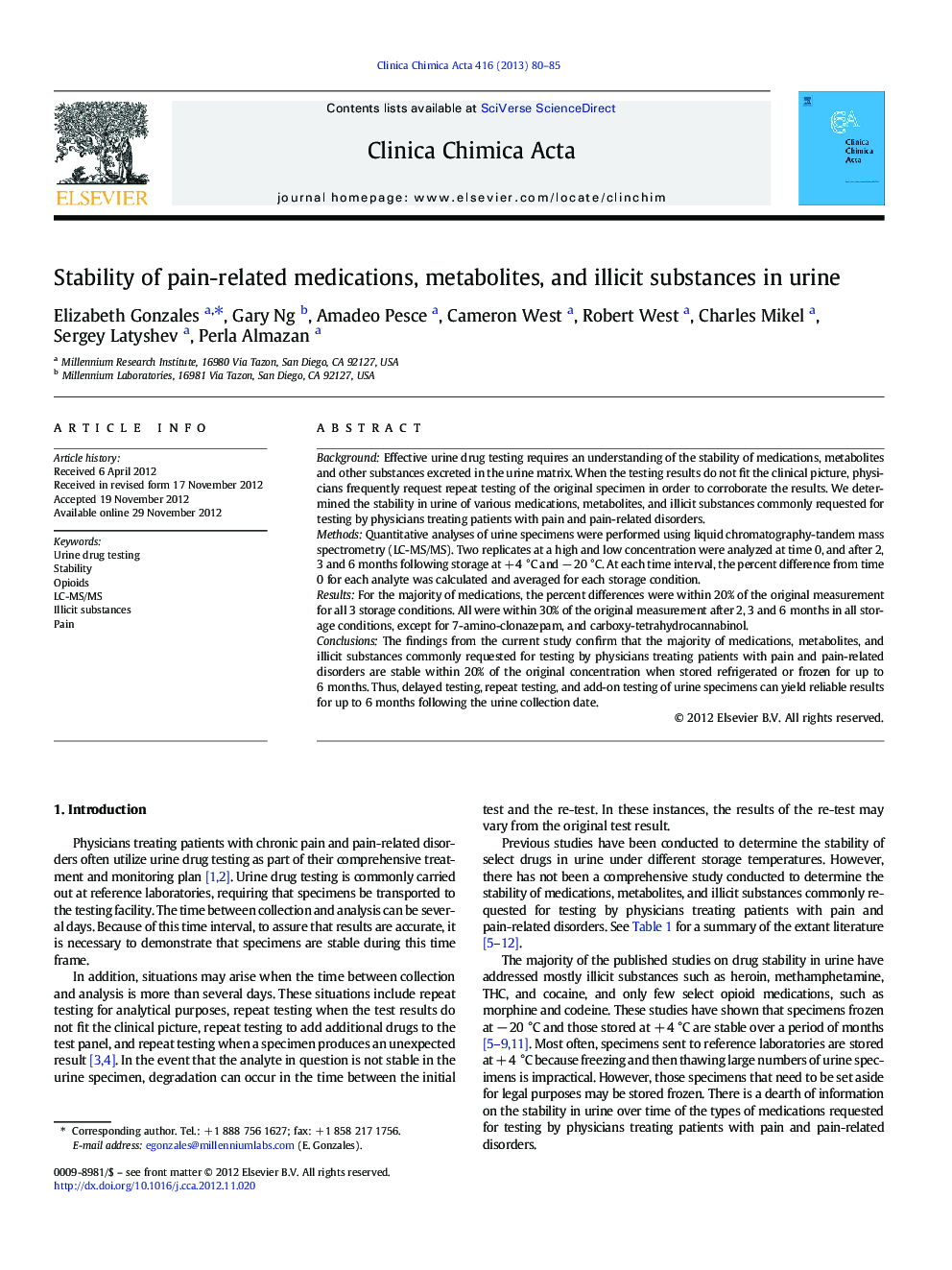| Article ID | Journal | Published Year | Pages | File Type |
|---|---|---|---|---|
| 1965781 | Clinica Chimica Acta | 2013 | 6 Pages |
BackgroundEffective urine drug testing requires an understanding of the stability of medications, metabolites and other substances excreted in the urine matrix. When the testing results do not fit the clinical picture, physicians frequently request repeat testing of the original specimen in order to corroborate the results. We determined the stability in urine of various medications, metabolites, and illicit substances commonly requested for testing by physicians treating patients with pain and pain-related disorders.MethodsQuantitative analyses of urine specimens were performed using liquid chromatography-tandem mass spectrometry (LC-MS/MS). Two replicates at a high and low concentration were analyzed at time 0, and after 2, 3 and 6 months following storage at + 4 °C and − 20 °C. At each time interval, the percent difference from time 0 for each analyte was calculated and averaged for each storage condition.ResultsFor the majority of medications, the percent differences were within 20% of the original measurement for all 3 storage conditions. All were within 30% of the original measurement after 2, 3 and 6 months in all storage conditions, except for 7-amino-clonazepam, and carboxy-tetrahydrocannabinol.ConclusionsThe findings from the current study confirm that the majority of medications, metabolites, and illicit substances commonly requested for testing by physicians treating patients with pain and pain-related disorders are stable within 20% of the original concentration when stored refrigerated or frozen for up to 6 months. Thus, delayed testing, repeat testing, and add-on testing of urine specimens can yield reliable results for up to 6 months following the urine collection date.
► The majority of compounds are stable in urine when stored refrigerated or frozen. ► Considerable degradation was observed with carboxy-THC and 7-amino-clonazepam. ► Repeat testing of urine specimens can yield reliable results for up to 6 months.
